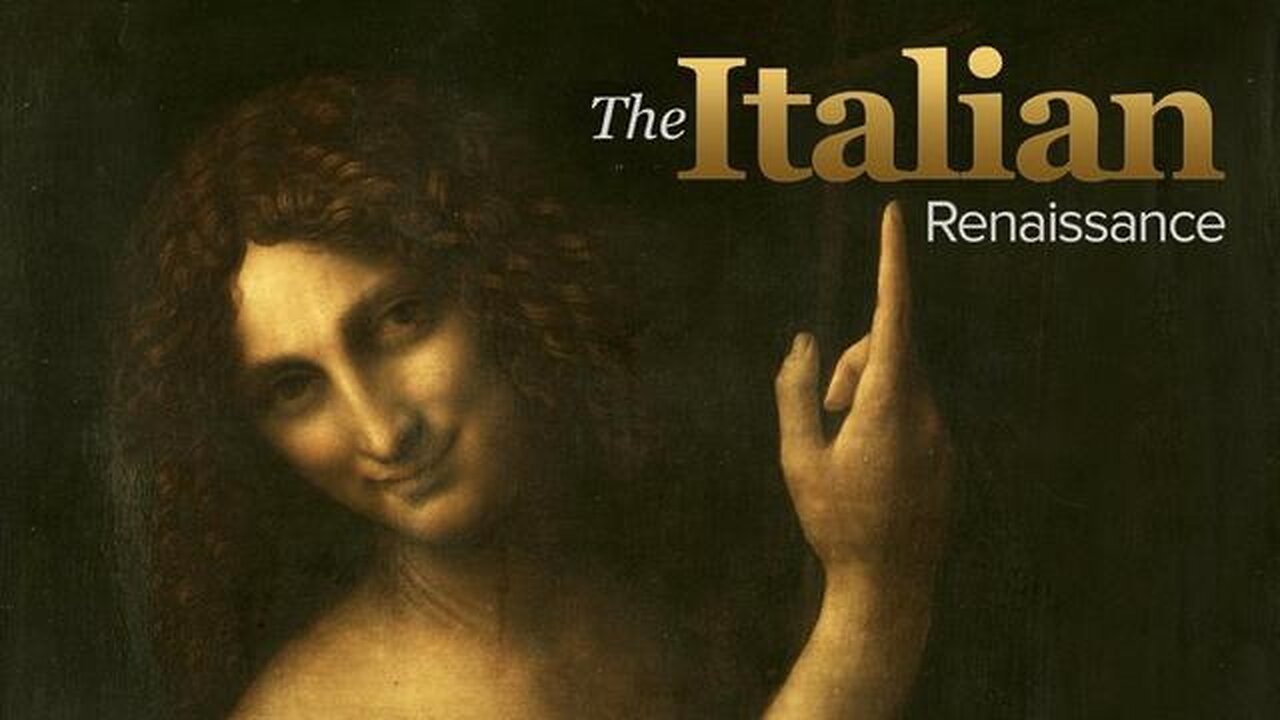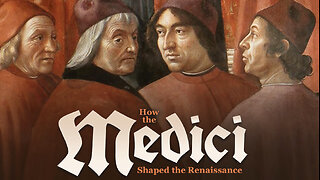Premium Only Content

The Italian Renaissance | Urbino (Lecture 16)
Lecture 16: Although a tiny principality of only 40 square miles perched in the Apennines, Urbino became one of the most celebrated sites of Renaissance culture. Because the inhospitable nature of the terrain made it difficult to coax much from the soil, the population sustained itself for generations by serving as mercenary soldiers fighting under the signori of the Montefeltro family.
The most famous of the Montefeltros was Federigo, who ruled from 1444 until his death in 1482. In addition to being a great leader, never losing a battle, and—uncharacteristically for a mercenary—never betraying a client, Federigo was among the greatest patrons of culture in the Italian Renaissance. His new palace was a center for study and art, welcoming such painters as Piero della Francesca and Giovanni Santi, father of Raphael. He patronized scholars who worked constantly on his library until it became one of the most important collections of manuscripts in Europe, and his books were among the most beautiful, as illustrated by the incomparable Urbino Bible. After many pregnancies, Federigo’s wife, Battista Sforza, finally produced an heir, Guidobaldo (1472−1508). But he proved to be sickly and weak, no match for the invasion of Cesare Borgia.
Primary Source Texts:
Vespasiano da Bisticci, “The Life of Federigo da Montefeltro,” in The Vespasiano Memoirs: Lives of Illustrious Men of the XVth Century.
Secondary Sources:
James Dennistoun, Memoirs of the Dukes of Urbino.
Supplementary Reading:
Alison Cole, Virtue and Magnificence: Art of the Italian Renaissance Courts.
Lecture 17: https://rumble.com/v4y3sxk-the-italian-renaissance-castiglione-and-the-book-of-the-courtier-lecture-17.html
-
 30:08
30:08
The Great Courses
12 days agoHow the Medici Shaped the Renaissance | The Godfather: Cosimo de' Medici (Lecture 3)
192 -
 LIVE
LIVE
The Dilley Show
1 hour agoTrump Conquering Western Hemisphere? w/Author Brenden Dilley 12/23/2024
4,366 watching -
 1:09:59
1:09:59
Geeks + Gamers
3 hours agoSonic 3 DESTROYS Mufasa And Disney, Naughty Dog Actress SLAMS Gamers Over Intergalactic
5.65K1 -
 51:59
51:59
The Dan Bongino Show
4 hours agoDemocrat Donor Admits The Scary Truth (Ep. 2393) - 12/23/2024
399K1.13K -
 2:32:15
2:32:15
Matt Kohrs
14 hours agoRumble CEO Chris Pavlovski Talks $775M Tether Partnership || The MK Show
74.9K19 -
 28:23
28:23
Dave Portnoy
14 hours agoDavey Day Trader Presented by Kraken - December 23, 2024
90.4K31 -
 59:29
59:29
BonginoReport
5 hours agoTrump, Murder Plots, and the Christmas Miracle: Evita + Jack Posobiec (Ep.110) - 12/23/2024
87.5K83 -
 2:59:14
2:59:14
Wendy Bell Radio
8 hours agoNothing To See Here
82.9K53 -
 2:12:18
2:12:18
TheDozenPodcast
1 day agoIslam vs Christianity: Bob of Speakers' Corner
84.9K23 -
 14:36
14:36
The StoneZONE with Roger Stone
1 day agoRoger Stone Delivers Riveting Speech at Turning Point’s AMFEST 2024 | FULL SPEECH
108K27